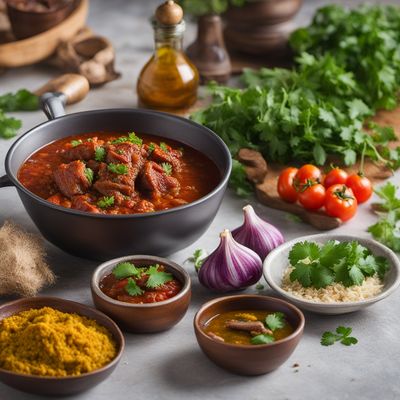
Ingredient
Tropical almond
The Exotic Delight: Tropical Almond
Tropical almond is a tree native to tropical regions such as Southeast Asia, Africa, and the Pacific Islands. The fruit of the tropical almond tree is a drupe that resembles an almond, hence its name. The outer shell is hard and woody, while the inner seed is edible and has a similar taste and texture to almonds. Tropical almonds have a rich, nutty flavor with a slightly sweet undertone. The texture is crunchy and firm, similar to traditional almonds. They can be enjoyed raw or roasted, and are often used in both sweet and savory dishes.
Origins and history
Tropical almond has a long history of cultivation and usage in various cultures. It is believed to have originated in Southeast Asia and has been cultivated for centuries for its edible seeds and oil. In traditional medicine, tropical almond is used to treat various ailments and is believed to have anti-inflammatory and antioxidant properties. It is also an important ingredient in many traditional dishes and desserts in tropical cuisines.
Nutritional information
Tropical almonds are a good source of healthy fats, protein, and dietary fiber. They are also rich in vitamins and minerals, including vitamin E, magnesium, and calcium. Tropical almonds are lower in calories compared to traditional almonds, making them a nutritious snack option. However, it is important to note that individuals with nut allergies should exercise caution when consuming tropical almonds.
Allergens
May contain traces of other tree nuts.
How to select
When selecting tropical almonds, look for ones that are free from cracks or holes in the shell. The shell should be intact and not damaged. Shake the almond to ensure it does not rattle, as this may indicate that the seed is old or dried out. Opt for organic or sustainably sourced tropical almonds whenever possible to support environmentally friendly practices.
Storage recommendations
To maintain the freshness and quality of tropical almonds, store them in an airtight container in a cool, dry place. They can also be stored in the refrigerator or freezer to extend their shelf life. Roasted tropical almonds should be stored in a sealed container to preserve their crunchiness.
How to produce
Tropical almond trees can be grown in tropical or subtropical regions. They require well-drained soil and plenty of sunlight. The trees are relatively low-maintenance and can be grown from seeds or seedlings. Regular watering and occasional pruning are necessary to ensure healthy growth and fruit production.
Preparation tips
Tropical almonds can be enjoyed as a snack on their own, raw or roasted. They can also be used in baking, such as in cookies, cakes, or granola bars, to add a nutty flavor and crunchy texture. In savory dishes, tropical almonds can be ground into a paste or used as a topping for salads, stir-fries, or curries. Additionally, they can be processed into almond milk or used to make almond butter.
Substitutions
Traditional almonds, cashews, or macadamia nuts can be used as substitutes for tropical almonds. However, keep in mind that the flavor and texture may vary slightly.
Culinary uses
Tropical almonds are commonly used in tropical cuisines, particularly in dishes from Southeast Asia, Africa, and the Pacific Islands. They are often incorporated into curries, desserts, and snacks. Tropical almonds can also be found in specialty stores or online retailers that offer exotic ingredients.
Availability
Southeast Asia, Africa, Pacific Islands

